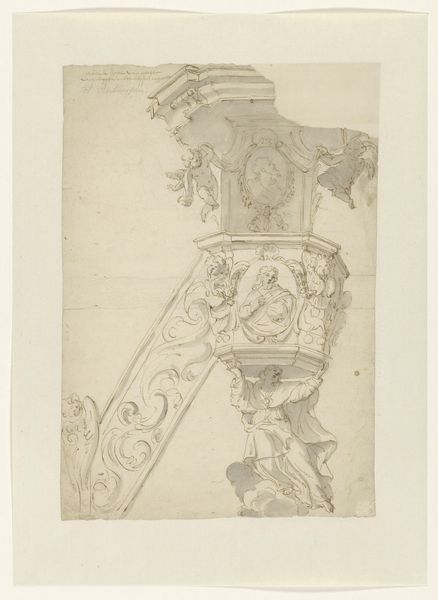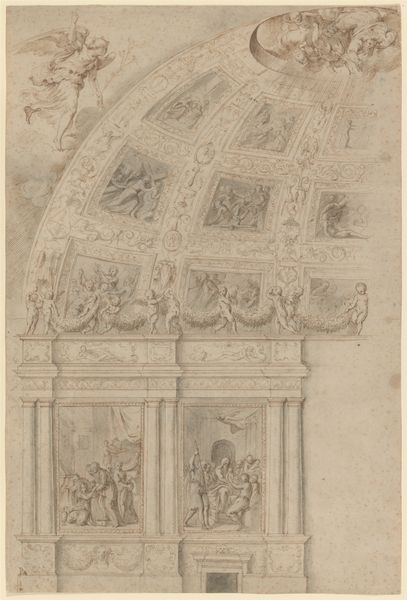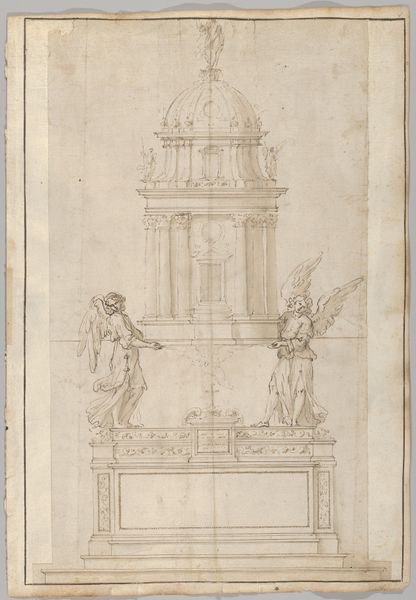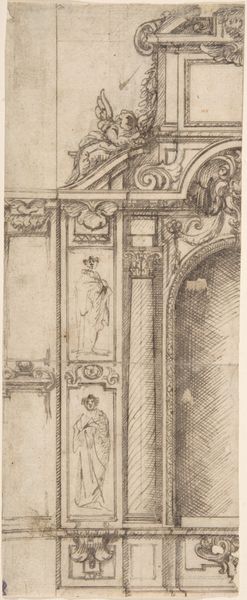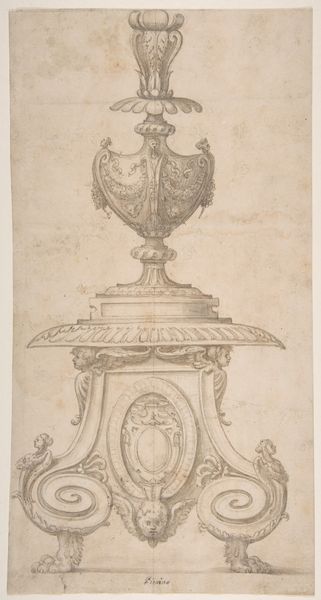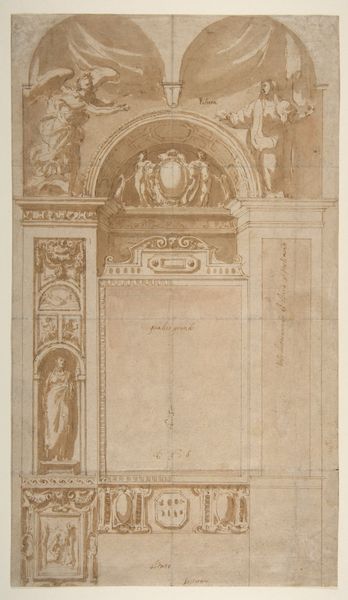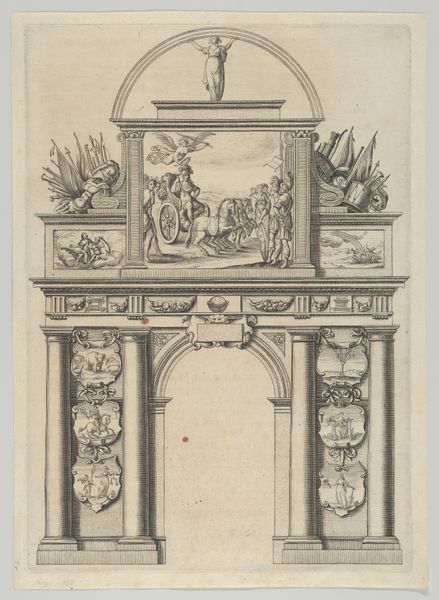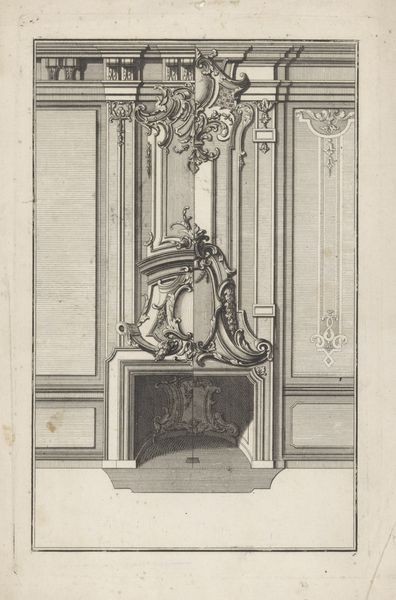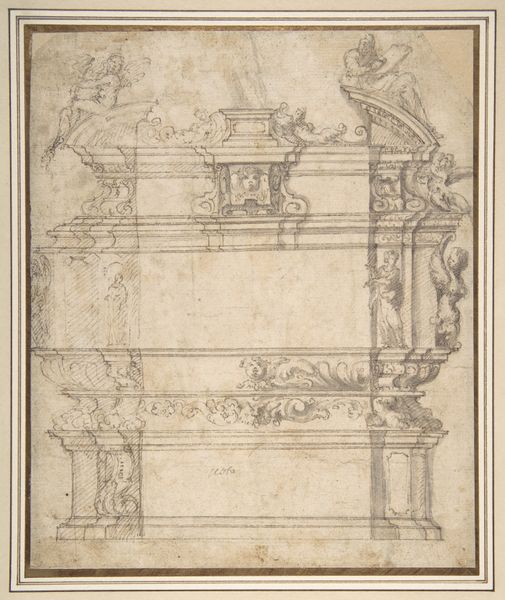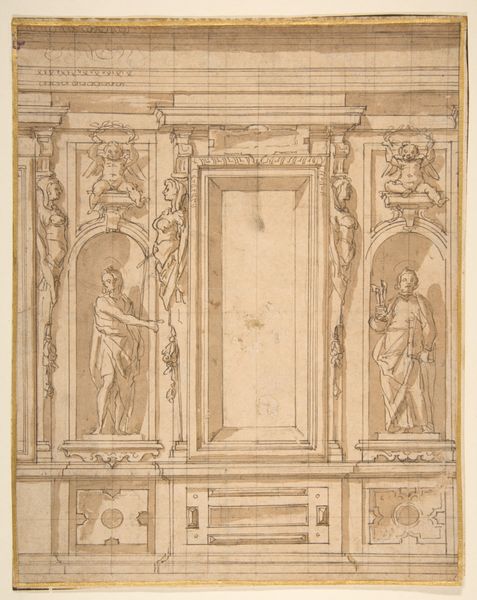
drawing, paper, ink, pencil, architecture
#
drawing
#
baroque
#
paper
#
ink
#
geometric
#
pencil
#
history-painting
#
architecture
Dimensions: height 350 mm, width 277 mm
Copyright: Rijks Museum: Open Domain
Curator: Here we have "Design for a Pulpit," a drawing by Jan Claudius de Cock dating from between 1678 and 1736. It employs ink, pencil, and paper, showcasing the baroque style. Editor: The initial impression is quite striking; it feels monumental even in this sketch format. The line work emphasizes detail and the weight implied by that central, burdened figure supporting what seems like the pulpit itself. Curator: Precisely, the composition’s power relies on its contrasting elements. Note the detailed baroque ornamentation—scrollwork and elaborate carving, set against the strict geometry implied in the stairs and architectural structure. It uses formal techniques typical of architectural drawings to convey grandeur. Editor: Thinking about the role of pulpits historically, the architecture, therefore, plays a significant part. I wonder about the commissioning context. It seems like it was intended to convey not only spiritual authority, but worldly power through a statement of excess and artistic patronage. Curator: The figure functioning as a corbel, almost crushed under the weight... interesting semiotic construction. In other words, the drawing may not be celebrating an individual or God directly, but rather constructing authority via these symbols of weight and support. Editor: It invites discourse about power and religion as it intersected during that era. And it questions which came first the power or the spirituality of it all. It almost looks like there's an almost cruel display that pits the bearer on one side against the carried. Curator: So, a fascinating intersection between representation and material culture then. From a formal standpoint, this elevates design by demonstrating this artistic process to visualize how symbols and physical supports combine in one artistic work. Editor: This makes us aware of the art that went into a setting of high-stakes persuasive speaking. De Cock’s design gives form and shape to power that is ready to be used through sermons and speeches, and that seems significant in terms of religious history. Curator: Right. Considering both the architectural precision and symbolic gravity encapsulated here, the drawing succeeds both as practical design and cultural critique. Editor: Yes, something that exists, yet critiques simultaneously through clever compositional staging.
Comments
No comments
Be the first to comment and join the conversation on the ultimate creative platform.
